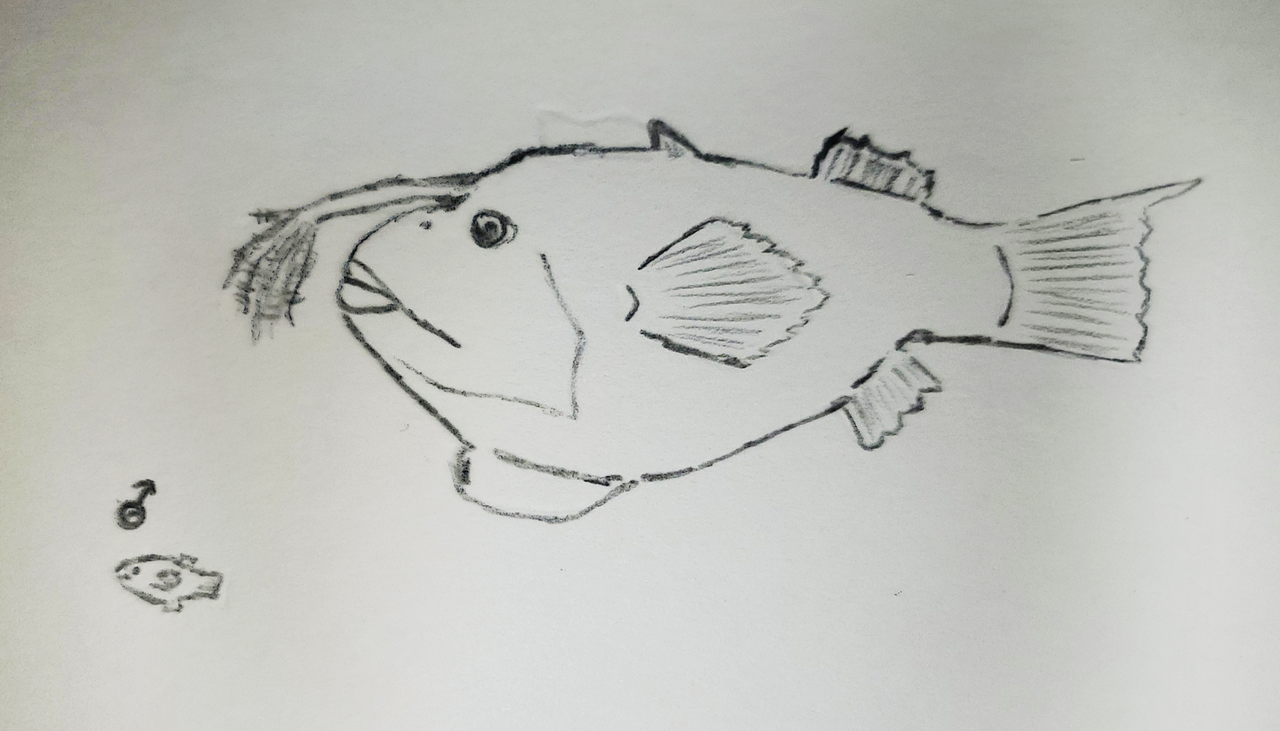HOME | DD
 orlenM — Speculative Evolution - Grindel
orlenM — Speculative Evolution - Grindel

#fish #grindylow #hell #spec #speculative #linophryne #lophiiformes #anglerfish #deepsea #evolution #grindel #speculativeevolution #gorgaias
Published: 2022-01-28 20:15:10 +0000 UTC; Views: 3073; Favourites: 18; Downloads: 2
Redirect to original
Description
This is the Grindel, a pelagic descendant of an anglerfish.In the world known as Gorgaias, many types of deep-sea fish were introduced to the planets vast oceans. This world is of course one that was originally seeded with Earth animals considered scary or creepy and the deep sea is filled with the stuff of nightmares. Some introduced species include the Goblin Shark (one of its descendants, the Scylle , has already been discussed), viperfish, marine hatchetfish, chaemeras and many species of anglerfish (Lophiiformes). By comparison, extremely few pelagic fish were introduced, meaning an incredible about of niches were left vacant. With a more even playing field now, some of these deep sea species began to move out of the abyss and into the higher waters. The fact that most deep sea species actually dwell close to the surface in their larval stage probably helped the necessary adaptations needed for such a lifestyle change to occur relatively quick.
It is uncertain which species of angler is the direct ancestor of the Grindel, though the family Linophrynidae has been suggested as likely. Generally hunting in more coastal waters or the mesopelagic zone, the need for a bioluminescent lure was decreased. However, the Grindel still kept its lure, which now evolved long seeweed-like strands from the tip which are covered in barbs and exude a thin oily substance that is believed to have mildly toxic properties. Rather then just sitting and waiting for prey to be lured in, the Grindel will often pursue its prey short distances with short, quick bursts of speed and its lure pointed outward and ready to ensnare its quarry.
As in many species of the ancestral angler, the male is significantly smaller than the female. It also lacks a lure. However, the male Grindel is not parasitic. Instead, it usually lives in a special fleshy pocket that grows from the females chest. Male Grindel clean the females lure of any remains and when mating they will grab the eggs of the female and place it inside the pocket where he will fertilize and watch over them. Once hatched, the male watches over the fry, who live with him in the pocket for a couple of weeks until they reach about the same size as him. Grindel lay relatively few eggs, so the pocket and protective father ensure a higher percentage of offspring survive to maturity. Grindel couples stay together for as long as possible, though rival males will attempt to usurp a resident male from his pocket, thus males are rather aggressive towards one another and similarly small fish. A male without a female to protect him is far more vulnerable to starvation and predation and thus there are fewer partnerless males than females.
Happy weekend everyone! I was actually going to post several angler descendants together, but I did not finish the drawing on time. Wanted to post something over the weekend, so hope you enjoy this smaller piece!



























